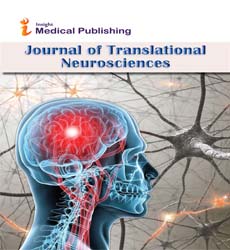Intelligent Techniques for Predicting Parkinson Disease
Haya Alaskar
Haya Alaskar*
Department of Computer Science, Prince Sattam University, Alkharj, Saudi Arabia
- Corresponding Author:
- Haya Alaskar
Department of Computer Science Prince Sattam University, Alkharj, Saudi Arabia
Tel: 00966506476019
E-mail: sun_2258@hotmail.com
Received date: April 29, 2016; Accepted date: May 02, 2016; Published date: May 05, 2016
Citation: Haya Alaskar. Intelligent Techniques for Predicting Parkinson Disease. J Transl Neurosci. 2016, 1:1.
Copyright: © 2016 Haya Alaskar. This is an open-access article distributed under the terms of the Creative Commons Attribution License, which permits unrestricted use, distribution, and reproduction in any medium, provided the original author and source are credited.
Editorial
Since 1817 one of neurodegenerative disease has been discovered, which is Parkinson's Disease (PD). PD is regard as the second of the mainly common neurodegenerative disorder, after Alzheimer's disease. It is type of neurological disorders which affects older people, which is caused by the loss of some nerve cells (Substantia Nigra) in the human brain. These neurons are very important to create a chemical liquid called dopamine, which is essential factor for directing and controlling the body movement by the brain. The history of this disease go back to 1817, when the first diagnosis was described by James Parkinson, who wrote a paper called, Essay on the Shaking Palsy, which actually explained the symptoms of the Parkinson diseases and enhance the name of Parkinson. The Parkinson's disease analysis is been considered by medical community. Statistics show that the risk of appearance of Parkinson disease on the age of person above 50, the rate of PD to effects people in age 65 to 69 years are 0.5 to 1 percent, increasing to 1 to 3 percent on the age of 80 and older. It is approximately more common in men than in women. There are two types of Parkinson symptoms, motor and non-motor type. The motor type is the most features type which are well-known for PD symptoms and they are tremor (shaking) at rest, bradykinesia (slowness of movement), rigidity (stiffness) of the limbs, and postural instability (effect balance), The non-motor symptoms of PD are psychological disturbances such as anxiety and apathy, and sleep problem, dementia and dysautonomia depression and, also suffering from some gastrointestinal problems. At the early stage of the Parkinson disease is hardly diagnosis, patient feels of weakness or stiffness in one limb, but over time the disease become critical and complicated, PD patients suffer from worse symptoms such as speech and writing problems, problems with balance or walking, also, suffering of some confusion and memory loss, as well as depression and emotional problems. This type of diseases is continuing for long period of time, so, PD is referring as chronic. Moreover, it is known by progressive disease, which its symptoms will be progressing badly overtime. However, Neurologists give a great offer to find out the causes and treatments for the disease.
The diagnosis is made clinically which mostly has done by experts to indicate the presence of Parkinson diseases. PD is difficult to diagnosed, patients are asked to take number of tests for diagnosis of PD. Moreover some situations are wrong diagnosis for example, people with PD who have been checked before are not diagnosed. This might related to that PD symptoms are similar to Parkinsonism, which the last one affected by drugs, exposure to environmental toxins, repeated head trauma or thyroid and parathyroid disorders. Different Parkinson studies concluded that age is considered the most important risk factor for PD.
The medical scientists have paid special attention to early diagnosis of PD by analysis biological signals from patients; For example monitoring to brain activity waves by recording an Electroencephalogram (EEG) signal in order to detect diseases related to brain functions. A number of studies have discovered EEG abnormalities in PD patients by using one of signal processing methods. This contribution will might to expose more important hidden information underlying brain functions that may cause PD.
Furthermore, many other studies of Parkinsonian have also focused one another type of biological signals. It called the Electromyogram EMG this type of signal record the neuromuscular system of humans, which measuring the electrical potential. Studies discovered that EMG signals of the PD patient have more burst activations than the EMG signals of healthy person. The scientists have found that EMG may contain important information about brain and motor dysfunctions. Therefore, it can be useful in the early stage diagnostics of PD.
In the literature, different researches have addressed the problem of classification on different medical type of data. Most classification task in medical applications has concentrated on identifying pattern between healthy and unhealthy cases. Artificial Intelligence (AI) techniques such as Artificial Neural Networks (ANN), an algorithm derived from biological systems. ANNs play dominant role in medical applications. Most AI systems use typical main stages for analyzing biological signals such as EEG, EMG and ECG signals and the graphical representation of a heart sound recording (PCG) signals of heart, those includes denoising stages, feature extraction stages, and classification stages. Early detection and prediction of PD symptoms can be achieved through the examination and classification of EEG and EMG by implementing AI methodologies and algorithms. ANNs have been the most widely used machine learning-based approach for signal processing of medical signals and pathology. A number of researchers have used ANN to analysis PD diseases. These researches have approved the ability of ANN techniques to diagnosis PD patients with high accuracy. Furthermore, it has been used for signal preprocessing. In addition, some researches have used ANN for selecting the most risk factors effecting PD. Eventually ANN is considered a promising tools for medical applications.
Open Access Journals
- Aquaculture & Veterinary Science
- Chemistry & Chemical Sciences
- Clinical Sciences
- Engineering
- General Science
- Genetics & Molecular Biology
- Health Care & Nursing
- Immunology & Microbiology
- Materials Science
- Mathematics & Physics
- Medical Sciences
- Neurology & Psychiatry
- Oncology & Cancer Science
- Pharmaceutical Sciences
